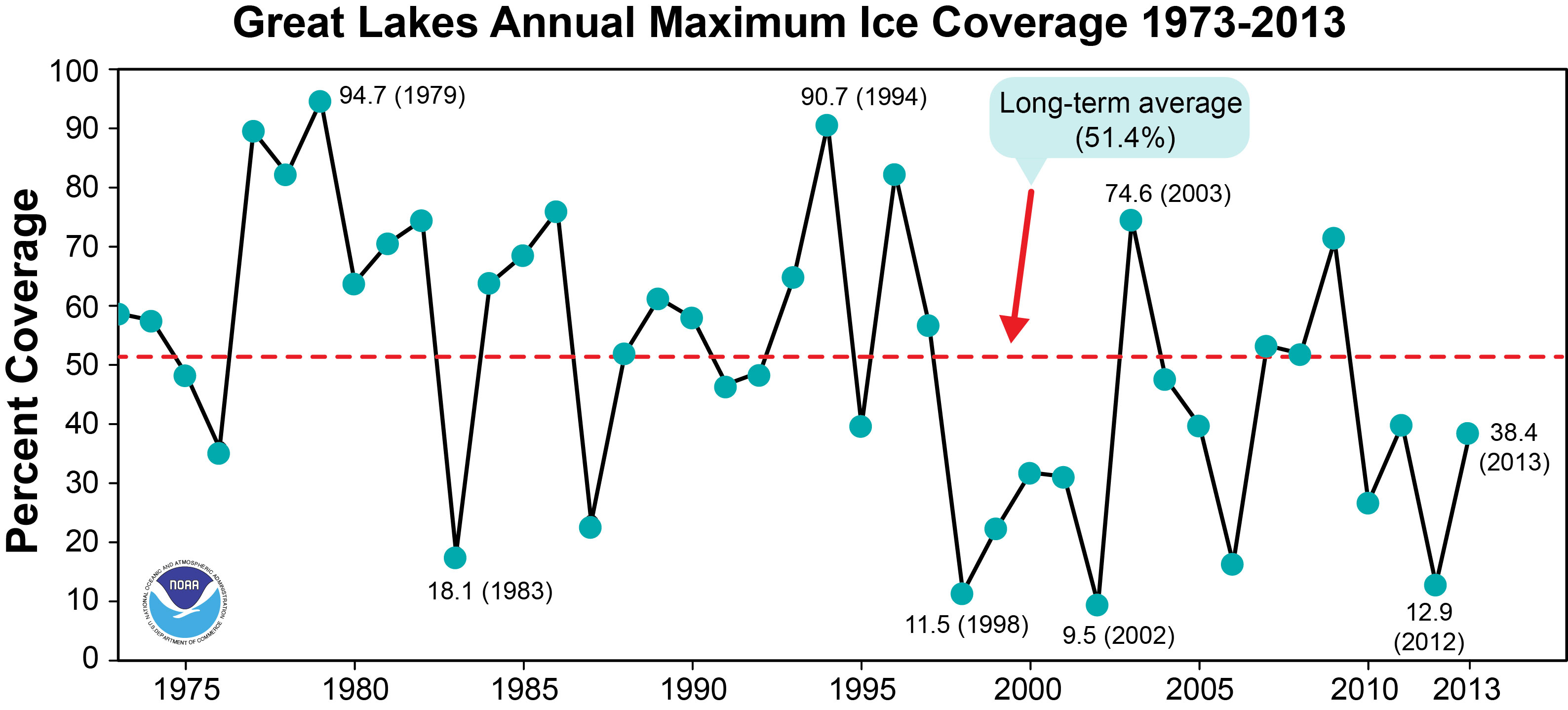Great Lakes Go For Fully Frozen


The Great Lakes are almost completely frozen over for the first time in 10 years, thanks to persistent cold weather. Ice covered 81.6 percent of the Great Lakes yesterday (Feb. 17), according to the Great Lakes Environmental Research Laboratory, part of the National Oceanic and Atmospheric Administration. The ice cover was even greater last week, reaching 88.4 percent on Friday, Feb. 14. The Great Lakes ice hasn't been this widespread since 1994, when 90.4 percent of the lakes' surface was under ice.
Though some of the lakes are more frigid than others — Lake Ontario is about 40 percent frozen, while Lake Erie is close to 100 percent covered in ice — the freeze is good news for the region. Last year saw record low water levels in the Great Lakes, but the ice cover will help lessen evaporation, one of the biggest factors in lake water loss.
The ice is also thick enough for people to reach the Apostle Islands' ice caves on Lake Superior for the first time since 2009. The National Park Service opened the ice caves to visitors in mid-January.
Read more: Great Lakes Water Levels Are in Unusual Decline
Email Becky Oskin or follow her @beckyoskin. Follow us @livescience, Facebook& Google+.
Get the world’s most fascinating discoveries delivered straight to your inbox.




